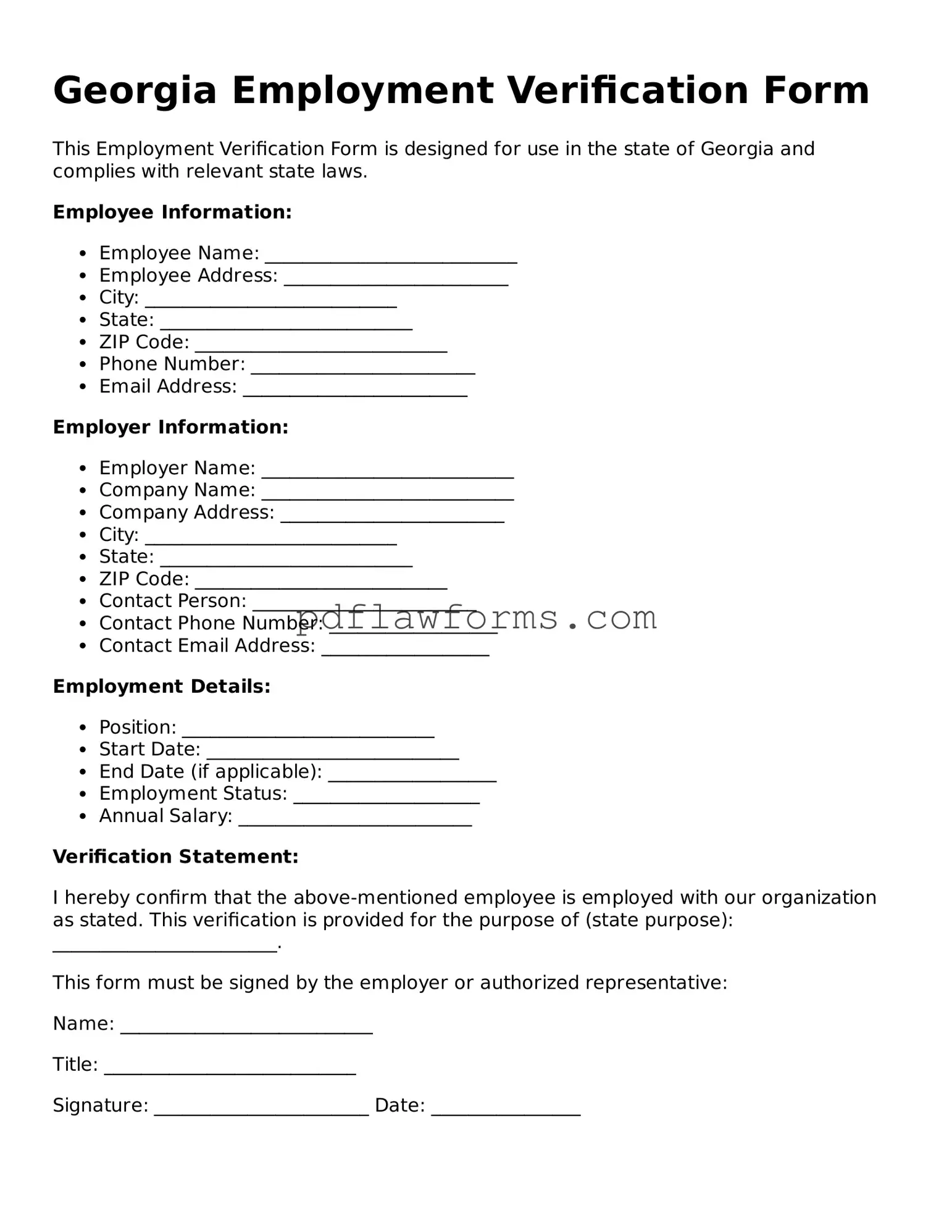Filling out the Georgia Employment Verification form can seem straightforward, but many people stumble along the way. One common mistake is leaving out essential personal information. When you don’t include your full name, Social Security number, or contact information, it can delay the verification process significantly. Always double-check that you’ve provided all the necessary details before submitting the form.
Another frequent error is providing inaccurate employment dates. Employers need specific start and end dates to confirm your employment history. If you’re unsure about the exact dates, it’s better to verify them with your employer rather than guess. Incorrect dates can lead to misunderstandings and may even jeopardize your application.
Many individuals also overlook the importance of signatures. Failing to sign the form can result in it being considered incomplete. Remember, a signature isn’t just a formality; it’s a way to confirm that the information you provided is accurate to the best of your knowledge. Make sure to sign and date the form appropriately.
In addition, some people forget to include the employer's contact information. This detail is crucial for the verification process, as it allows the verifying party to reach out for confirmation. Providing a reliable phone number or email can expedite the process and ensure that everything goes smoothly.
Another mistake is neglecting to read the instructions carefully. Each section of the form may have specific requirements. Skimming through the instructions can lead to missing critical information or misinterpreting what is needed. Take your time to read everything thoroughly before you start filling out the form.
Additionally, using incorrect or outdated information about your job title or department can create confusion. Job titles can change, and departments may be restructured, so it’s vital to provide the most current information. If you’re unsure, consult with your previous employer to confirm the details.
Finally, many people underestimate the importance of keeping a copy of the completed form. Once submitted, it’s easy to forget what you provided. Having a copy for your records can help you track your application and address any discrepancies that may arise later. Always make a habit of keeping copies of important documents.
